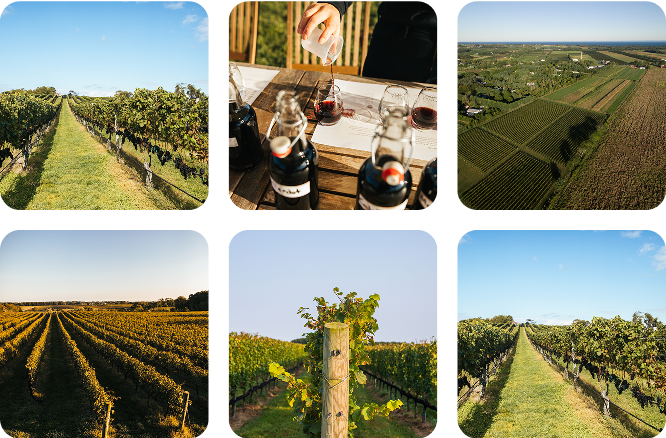FAQ
When was the LIWC established? How did it emerge?
Established in 1989, the Long Island Wine Country Organization was initially formed to help prospective growers navigate the challenges of starting businesses on Long Island. It has since evolved into an organization designed to help Long Island achieve recognition as a premium winegrowing region. Founded by David Mudd, who later became the first president of the Long Island Grape Growers Association (now the Long Island Wine Country Organization), the Organization offers promotion and development for Long Island’s established wine industry.
How many wineries and/or vineyards were involved at the start? (Were any other business types involved at the very beginning?)
When Long Island Wine Country was established, in 1989, there were 26 wineries.
What's so special about Long Island Wine Country?
The third-largest winegrowing region in the United States, New York is home to numerous acclaimed viticultural areas, of which Long Island is one. Considered a premier area in the state for winemaking, Long Island produces 500,000 cases of wine per year. The region’s climate is similar to that of Bordeaux, and so similar grape varieties thrive on Long Island, too: Merlot, Cabernet Franc, Cabernet Sauvignon, Carmenère, Petit Verdot, and Sauvignon Blanc. There are, however, over 25 grape varieties planted in the region, including Chardonnay, Albariño, Pinot Noir, Gewürztraminer, and others. Long Island is dedicated to the practice of exceptional winemaking, irrespective of style or grape variety.
What is the difference between a winery and a vineyard?
The word “vineyard” refers to the land where vines are planted, whereas the word “winery” refers to the place where grapes are turned into wine. The tasting room is where the wines are showcased for visitors.
How far in advance would you recommend making reservations at a tasting room?
Reservations depend largely on the size of your party and the purpose of your event. Special events, such as weddings, require a large lead time, and most wineries and vineyards require at least a year’s notice.
Are buses, limos or vans allowed to visit the tasting rooms?
When traveling by bus or limo, reservations are strongly recommended. It is best to check with the tasting room(s) you plan to visit ahead of time to make sure that they can accommodate your group size and to ensure that they can accept groups traveling by bus or by limo, as not all tasting rooms do. Some tasting rooms may add an additional “coach fee” to winery experiences, and many—if not all—will require advance reservations for buses and limos. You should check with your winery of choice beforehand to make sure that you are aware of any requirements or restrictions and to ensure that you have made the necessary preparations.
Can you visit more than one tasting room in a day?
Absolutely. Many wineries—especially those located on the North Fork—are located close to one another, which is why we use the term “Long Island Wine Country.” That’s why you may see a lot of Long Island winery tour buses at any given winery on any given day. These tours usually take their guests to multiple wineries in one tour. You can have a similar experience by visiting these wineries independently. Just pick and choose which wineries seem most appealing to you by searching our “Visit” page. You can create a day you’ll never forget.
When is the ideal time of year to visit Long Island Wine Country?
Long Island Wine Country offers a remarkable destination year-round, as each season provides something different and new. The winter months are quieter, and can allow for more intimate tasting experiences, where visitors have the opportunity to get to know employees and discuss with staff the nuances of wine and the winemaking process. Spring and summer are both beautiful times of year to visit Long Island Wine Country, with their wealth of outdoor experiences, from outdoor tastings to walks in the vineyards. The fall is one of our most popular times of year, as the wineries are alive with activity. Late August through mid-October is harvest time on Long Island, which is always an exciting time to visit our tasting rooms. No matter which season you prefer, Long Island Wine Country always has something to offer.
What else is there to do in Long Island's wine region besides wine tasting?
Our region offers plenty to do beyond wine tasting. Visit our farm stands, antique shops, beaches, restaurants, nature preserves, and parks for a look at the bounty that is Long Island.
Where are some good places to stay while visiting Long Island Wine Country?
For a comprehensive list of locations that appeal to every type of traveler, please consult our “Visit” section.



